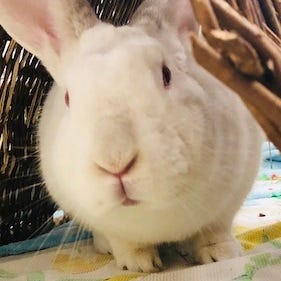The Grow interview series is designed to share the nuts and bolts of how writers have gone independent and grown their audiences on Substack. This interview has been lightly edited for length and clarity.
We invited Noah Smith, who writes Noahpinion, to share insights on the key to growth: focusing on the free list and doing work that is sustainable.
What’s your Substack about in one sentence?
It’s officially about economics, but one of the awesome things about Substack is that I can wander to other topics if I think it’s important or interesting.
What do you uniquely offer readers?
I try to help readers understand their world—the things they read about in the news, the economic, financial, and political forces that determine who gets a raise and who has to pay more taxes, and so on.
I think my strengths are:
Boiling down complicated concepts into simple terms without losing the original meaning
Integrating ideas and information from a very large variety of sources
Growth by the numbers
My paid subscription growth has been surprisingly consistent. The growth of the free email list has been a little more variable, sometimes slowing down and speeding up a bit.
Started Substack with paid subscriptions available from day one: November 2021
Free subscribers: 73,500
Paid subscribers: 6,200
Why did you decide to go paid?
At first, I had another job. Paid subscribers were a way to get some extra money. Then, when I had to quit my job for health reasons, I found that I could get enough paid subscribers so that I could just blog for money and not have to work another job!
What’s your content strategy?
I write about the things I’m interested in, in ways that I think will increase the public’s understanding the most.
Interviewing Patrick Collison of Stripe got a lot of attention. It’s probably still the best interview I’ve ever done and “put my blog on the map” among Silicon Valley folks, I think.
What’s the sharpest insight you can offer other writers about growing a Substack publication?
The free email list really is the key. People like to try before they buy. Some people will fork over a subscription fee because they read and liked one of your posts, but many will subscribe only after reading your free posts for a month or three and deciding they need more of your content (I paywall about 40% of my posts).
Free posts are also much better marketing than paid posts. If you have 50,000 readers and 5,000 paid subscribers, then writing free posts means there are 10x as many people who can share your post on social media. The more people who can share your posts, the more new people get exposed to your writing.
The number of paid subscribers is much less important unless you really need the money right now. You can always start paywalling more posts later if you want to and convert some percentage of the free subscribers to paid ones. So grow that free email list.
Free posts are also much better marketing than paid posts. The more people who can share your posts, the more new people get exposed to your writing.
What advice have you received about growing your publication that didn’t prove to be helpful?
Someone told me that I should always be increasing my percentage of paid subscribers. That’s ridiculous. For a writer, reach and audience is much more important than squeezing a little more money out of the people who already read you. I still make a majority of my posts free to read.
Read more: How to write a successful Substack
Who’s another Substack writer you turn to for guidance and inspiration?
Jim Pethokoukis, who writes Faster, Please!, is a highly underrated Substacker.
Takeaways
Grow your free email list however you can. “People like to try before they buy. Some people will fork over a subscription fee because they read and liked one of your posts, but many will subscribe only after reading your free posts for a month or three and deciding they need more of your content.”
Don’t write more than you can comfortably sustain over time. “No one likes a writer who does a big blitz, signs up paid subscribers, and then starts to phone it in. In the future, I might have Q&A sessions, meetups, video content, etc., but I’m only adding things at a pace I’m 100% sure I can sustain.”
Develop good relationships with other writers. “Substack is bringing back the blogosphere—a way to have conversations without the hyper-abbreviated posturing and screeching of Twitter. Use that to create high-quality conversations! Engaging in discussions is a much better viral marketing method than push-promoting your posts to people.”
What questions do you have for Noah that we didn’t ask? Leave them in the comments!
To read more from this series on growing your publication, see our interviews with Carissa Potter, Jørgen Veisdal, Anne Byrn, Nishant Jain, Michael Fritzell, Glenn Loury, Erik Hoel, Jessica DeFino, Mike Sowden, Elizabeth Held, Jonathan Nunn, Polina Pompliano, Michael Williams, Judd Legum, and Caroline Chambers.









Share this post